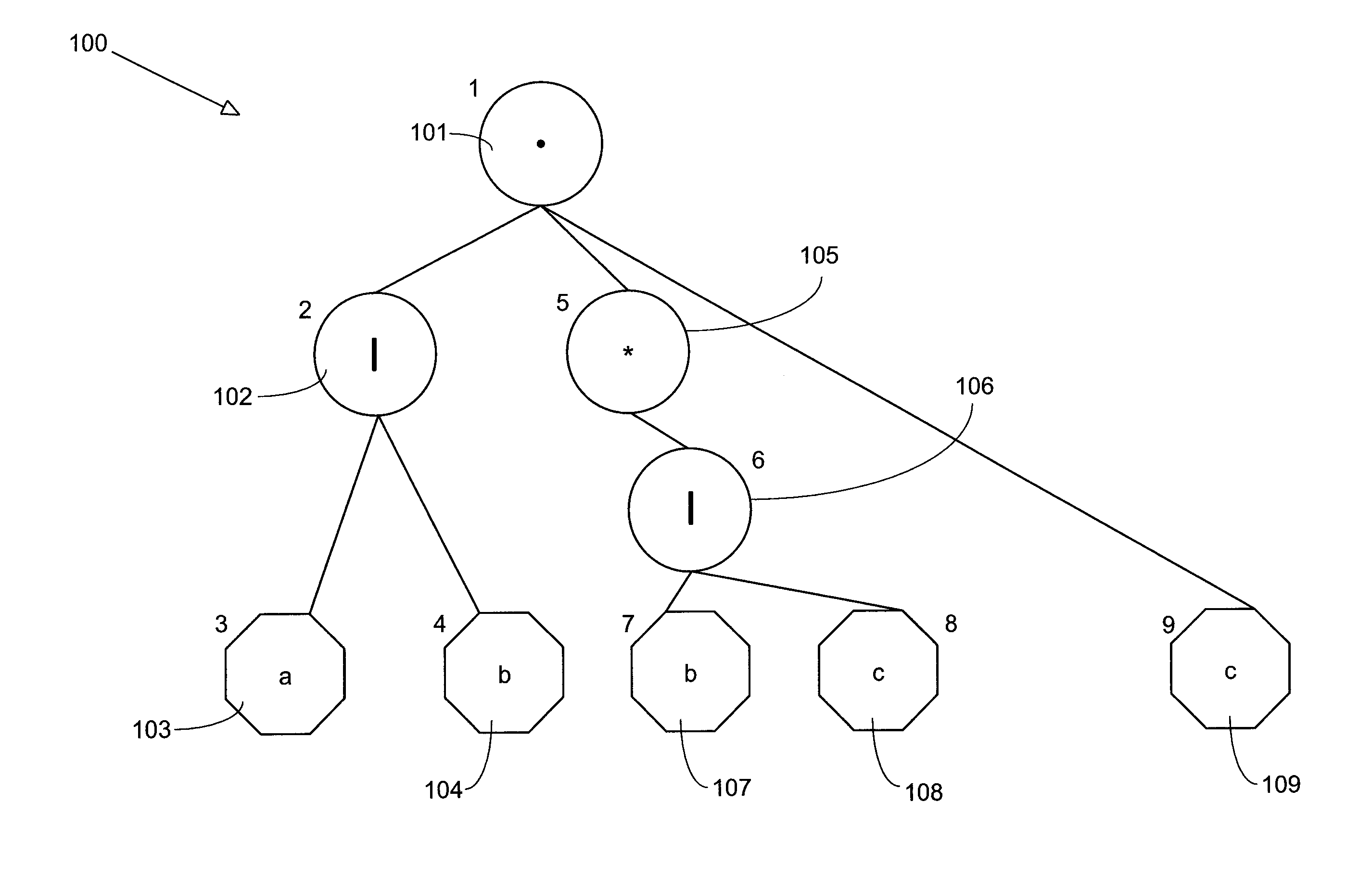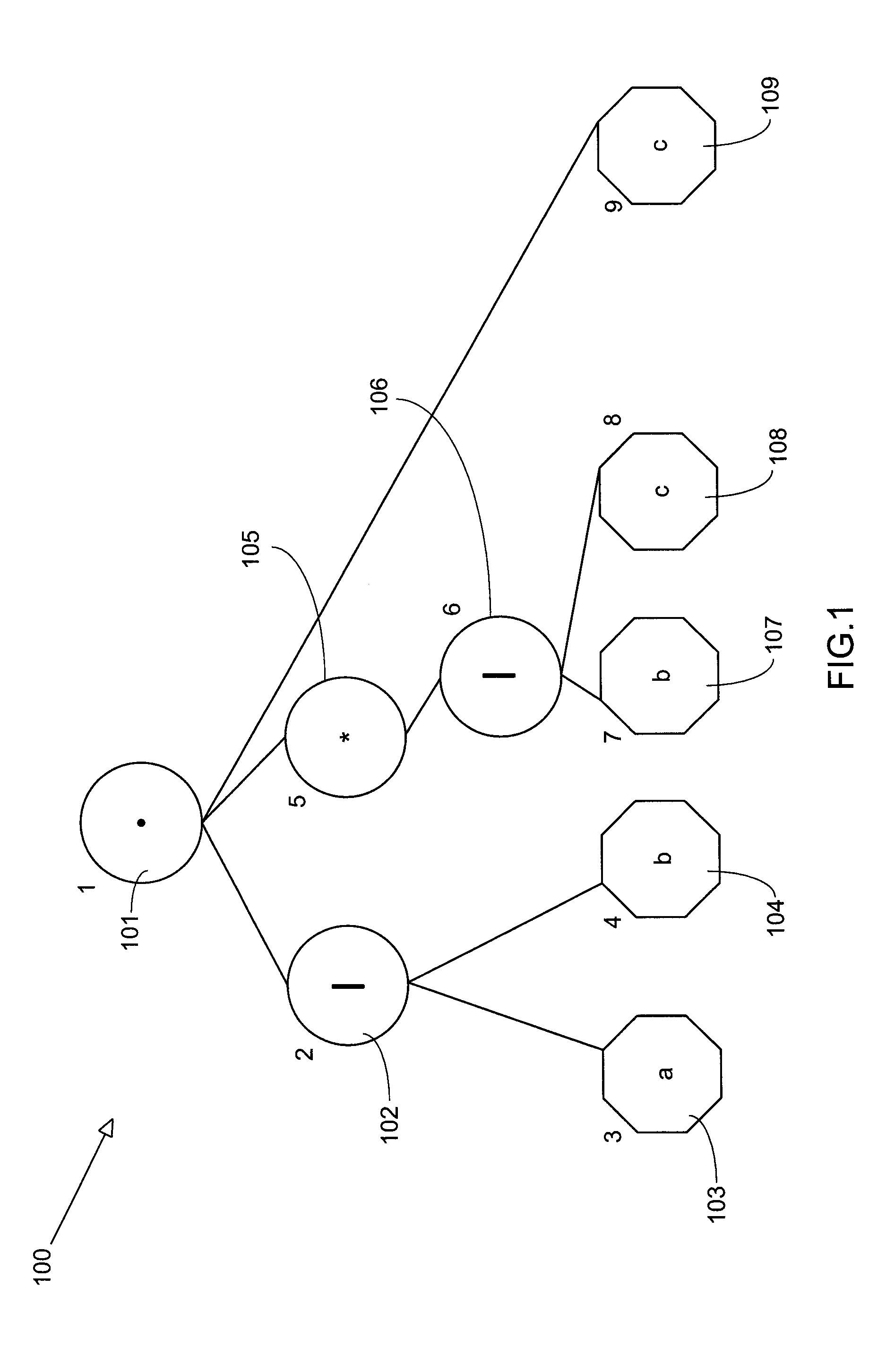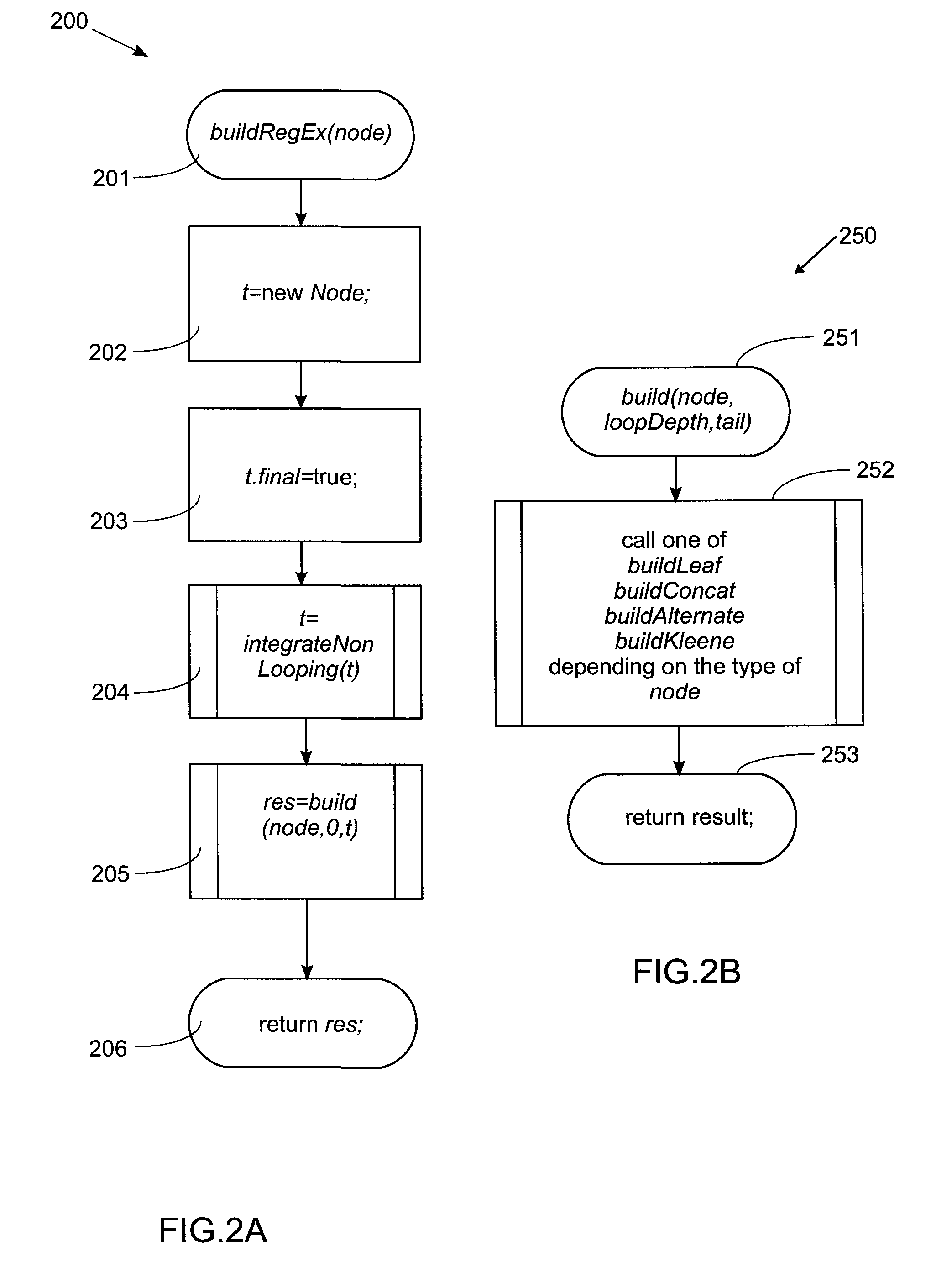Direct construction of finite state machines
a construction and finite-state technology, applied in the direction of instruments, computation using denominational number representation, pulse technique, etc., can solve the problems of complex process and large space requirements, and achieve the effect of reducing complexity and reducing spa
- Summary
- Abstract
- Description
- Claims
- Application Information
AI Technical Summary
Benefits of technology
Problems solved by technology
Method used
Image
Examples
example
[0114]The regular expression tree shown in FIG. 1 and described above, corresponds to the expression “(a|b)(b|c)*c” (which can be expanded to “(a|b)·(b|c)*·c”).
[0115]As described above, the expression tree 100 of FIG. 1 has a root node 101 of the concatenation operator. The root node 101 has a first child node 102 of the alternation operator, and two leaves 103, 104 of characters a and b. The root node 101 has a second child node 105 of the Kleene closure operator and a grandchild node 106 of the alternation operator with leaves 107, 108 of the characters b and c. The root node 101 also has a direct leaf 109 of the character c. The nodes 101 to 109 of the expression tree 100 are referred to below as expression nodes 1 to 9. This example expression tree will be used to show a worked example of the described method.
[0116]The steps taken to construct the minimal deterministic finite state automaton recognizing this language are described below as a worked example with reference to FIGS...
PUM
 Login to View More
Login to View More Abstract
Description
Claims
Application Information
 Login to View More
Login to View More - R&D
- Intellectual Property
- Life Sciences
- Materials
- Tech Scout
- Unparalleled Data Quality
- Higher Quality Content
- 60% Fewer Hallucinations
Browse by: Latest US Patents, China's latest patents, Technical Efficacy Thesaurus, Application Domain, Technology Topic, Popular Technical Reports.
© 2025 PatSnap. All rights reserved.Legal|Privacy policy|Modern Slavery Act Transparency Statement|Sitemap|About US| Contact US: help@patsnap.com



